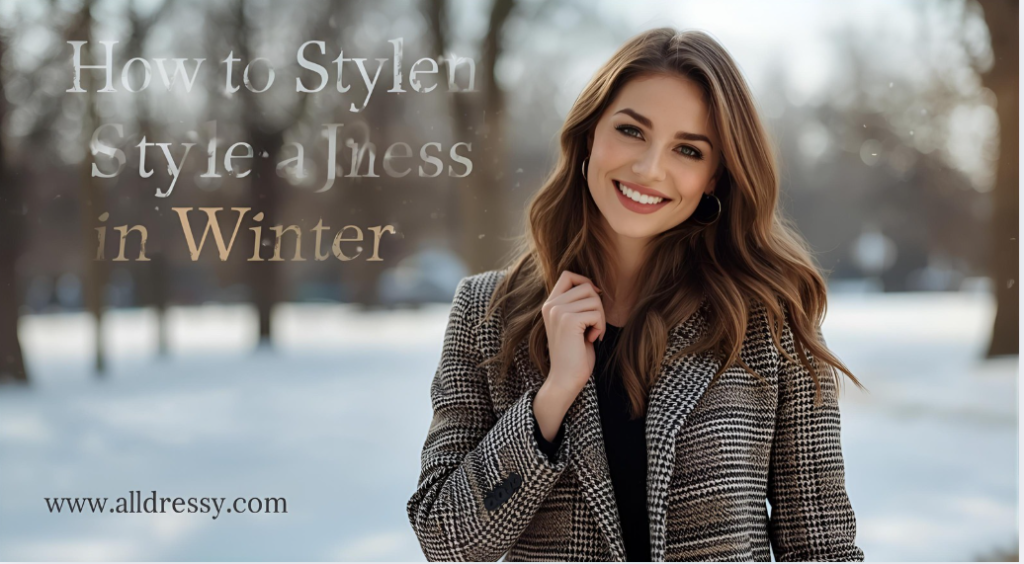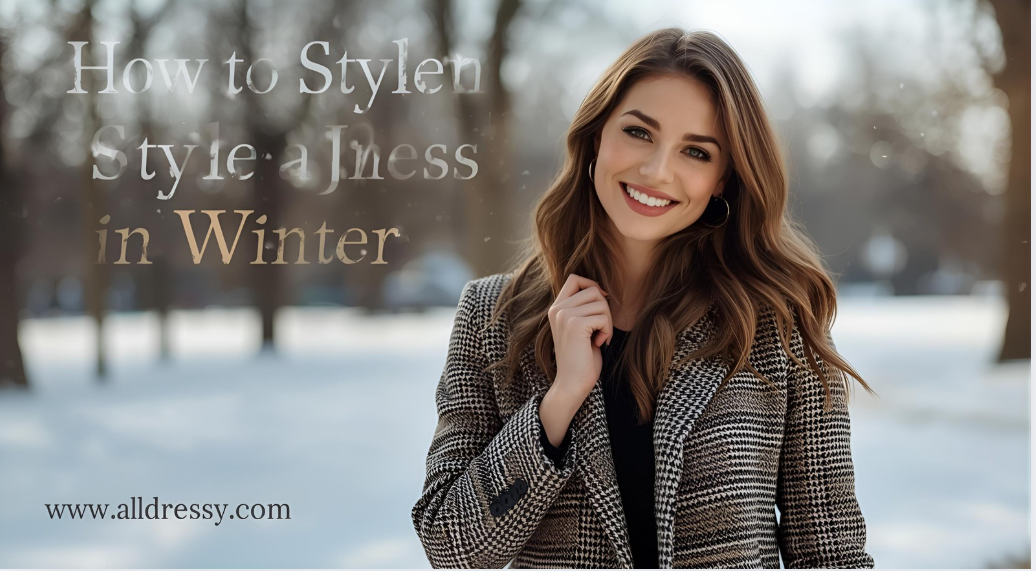The arrival of winter often signals a shift to bulky sweaters and heavy jeans, but for those who love the elegance and ease of dresses, the season doesn’t have to mean sacrificing style for warmth. Mastering how to style a dress in winter is the key to maintaining your personal flair while braving the colder months with confidence and comfort. This skill allows you to extend the life of your favorite summer and transitional pieces while embracing cozy, textural layers that create depth and interest in your outfits.
This comprehensive guide will transform your approach to cold-weather dressing. We will move beyond the basic concept of adding tights to explore a sophisticated system of layering, fabric selection, and accessory pairing that works for everything from a casual weekend brunch to a formal holiday party. Learning how to style a dress in winter is not about merely covering up; it’s about creating intentional, polished, and wonderfully warm ensembles that celebrate the season. Whether your style is minimalist, romantic, or edgy, this article will provide the expert knowledge to build winter dress outfits that are as functional as they are fashionable.
The Foundation: Understanding Fabric and Fit for Winter

The first step in learning how to style a dress in winter is to audit your wardrobe with a seasonal lens. The fabric and cut of your dress will dictate your layering strategy.
Winter-Weight Dress Fabrics:
- Wool and Wool Blends: From fine merino knits to sturdy tweeds, wool is the gold standard for winter. It provides excellent insulation and breathes well.
- Velvet: This luxurious, dense pile fabric is inherently warm and perfect for festive occasions.
- Heavy Knits: Think sweater dresses—chunky cable knits, ribbed cottons, and soft cashmere blends are outfits in themselves.
- Corduroy: Its raised wales trap heat, making it a sturdy and stylish choice for casual wear.
- Double-Knit Jersey: A thicker, more stable version of typical jersey, offering warmth and a flattering drape.
Strategic Silhouettes:
- Fit-and-Flare: This timeless silhouette is a winter winner because it easily accommodates layers underneath without adding bulk to your torso.
- Slip and Sheath Dresses: Their slim profile makes them ideal for wearing under chunky knit sweaters or as a base layer for a coat.
- A-Line and Shirt Dresses: These versatile shapes provide room for layering and can be belted to define the waist over thicker fabrics.
The Art of Layering: The Core Principle of Winter Styling
Layering is the non-negotiable cornerstone of knowing how to style a dress in winter. It’s about creating a system that traps heat while adding style.
1. The Base Layer: Invisible Warmth
This is your secret weapon against the cold. The goal is a thin, warm layer that lies flat against the skin.
- Cudl Duds or Thermal Wear: Modern thermal wear is incredibly thin, soft, and effective. A silk or synthetic blend camisole and leggings worn under your dress provide significant warmth without adding bulk.
- A Snug-Tucking Top: A thin, long-sleeved turtleneck or crewneck bodysuit is perfect. A bodysuit is especially effective as it stays perfectly tucked in, creating a smooth line.
2. The Mid-Layer: Style and Substance
This is where you add both warmth and personality.
- The Turtleneck Under Dress: A classic and chic technique. Pair a thin, fitted turtleneck under a slip dress, a sleeveless sheath, or a fit-and-flare dress. This works with both neutral tones for elegance or a contrasting color for a pop of interest.
- The Cozy Cardigan or Knit Sweater: Drape a chunky cardigan over your shoulders or wear a fitted knit sweater over the shoulders of your dress, tying the sleeves loosely in front.
- The Blazer or Leather Jacket: For a more structured, professional, or edgy look, layer a blazer or a moto-style leather jacket over your dress. This works beautifully with both daytime and evening looks.
3. The Top Layer: The Statement Coat
Your coat is the final, most visible layer of your winter dress outfit.
- The Wool Trench or Cocoon Coat: These styles are elegant and roomy enough to fit over layered dresses without pulling.
- The Puffer or Parka: For extreme cold, a knee-length puffer or parka is a practical and stylish choice. Its volume can be balanced with sleek boots and tights.
- The Faux Fur or Shearling Coat: Adds a touch of glamour and incredible warmth, perfect for making a statement.
From the Bottom Up: Tights, Socks, and Footwear
Your choice of legwear and footwear is critical for both warmth and completing the aesthetic when figuring out how to style a dress in winter.
The World of Tights:
- Opacity is Key: Forget sheer deniers. Opt for 80 denier or higher for opaque coverage and warmth. Wool-blend tights are a game-changer for serious cold.
- Texture and Pattern: Don’t be afraid of textured tights like ribbed knits or fine cables. Patterned tights, such as subtle herringbone or polka dots, can add a playful touch.
- Fleece-Lined Tights: The ultimate winter hack. These look like standard opaque tights on the outside but have a soft, plush fleece interior, providing the warmth of leggings with the elegance of hosiery.
Sock and Footwear Strategies:
- The Over-the-Knee Boot: This is arguably the most effective and stylish winter boot. It can be worn over opaque tights, creating a seamless, leg-lengthening look that provides exceptional warmth.
- Ankle Boots with Secret Socks: Pair ankle boots with a dress and tights, but add a pair of heat-tech or wool socks that rise above the boot line. This seals in heat and adds a cozy, intentional detail if it peeks out.
- Knee-High Boots: A classic choice that provides great coverage and works with almost every dress length.
- Platform Loafers or Oxfords: For a preppy, academic look, wear these with chunky, textured socks (like fair isle or cable knit) that are visible over your tights.
Accessorizing for Warmth and Style
Accessories in winter are functional art. They are the finishing touches that seal in warmth and elevate your outfit.
- Scarves and Wraps: A large, chunky knit scarf or a wool wrap adds a layer of warmth around your core and can be used to cover your head and neck in a pinch. A silk scarf tied at the neck can add a pop of color under a coat.
- Hats and Headwear: A beanie or beret isn’t just for warmth; it completes the silhouette. A significant amount of body heat is lost through the head, making this a functional necessity.
- Gloves and Mittens: Leather gloves lined with cashmere or tech-friendly touchscreen gloves are both stylish and practical.
- Belts: Use a belt to define your waist, especially when wearing a voluminous coat or a thick sweater dress. This prevents a boxy, overwhelmed look and creates a flattering shape.
Seasonal Color Palettes and Textural Play
Winter dressing offers a unique opportunity to play with rich colors and contrasting textures.
- Embrace Winter Hues: While black, grey, and navy are staples, don’t shy away from deep jewel tones like emerald green, sapphire blue, burgundy, and amethyst. These colors look rich and luminous against a winter landscape.
- The Power of Texture: Winter is the season for texture mixing. Combine a smooth, silky slip dress with a chunky, cable-knit cardigan. Pair a sleek leather jacket with a soft, flowing maxi dress. Contrast a tweed dress with sleek, shiny boots.
Occasion-Specific Outfits: From Casual to Formal
Let’s apply these principles to real-world scenarios to fully illustrate how to style a dress in winter.
The Casual Day Out:
- Dress: A corduroy shirt dress or a chunky knit sweater dress.
- Layers: A thermal base layer underneath. A denim or utility jacket as a mid-layer.
- Legs & Feet: Fleece-lined tights paired with sturdy ankle boots and wool socks.
- Accessories: A colorful beanie, a chunky scarf, and cross-body bag.
The Office-Approachable Ensemble:
- Dress: A wool sheath dress or a merino wool knit dress.
- Layers: A thin cashmere turtleneck worn underneath. A structured wool blazer on top.
- Legs & Feet: 80-denier opaque black tights with sleek, knee-high boots or polished leather loafers with hidden warm socks.
- Accessories: A tailored wool coat, leather gloves, and a structured tote.
The Holiday Party Glam:
- Dress: A velvet slip dress or a sequined mini.
- Layers: A sleek, silk bodysuit as a base. A faux fur stole or a tailored tuxedo blazer for dramatic effect.
- Legs & Feet: Sheer, shimmering tights (if you’re brave) or black opaque tights with elegant, heeled ankle boots or strappy heels you only wear from the car to the venue.
- Accessories: Statement earrings, a clutch, and a glamorous lip color.
Frequently Asked Questions (FAQs)
How can I wear a summer dress in winter without freezing?
It’s entirely possible! The key is strategic layering. Start with a thermal base layer (camisole and leggings). Then, add a long-sleeved turtleneck or button-down shirt underneath the dress. Layer thick, opaque tights or even skinny jeans underneath the dress for a fashion-forward look. Top it all with a chunky cardigan and a heavy coat. Finish with boots and a scarf to cover any remaining exposed skin.
What type of tights are the warmest for winter?
Fleece-lined tights are the warmest option widely available. They are essentially leggings disguised as tights. For even more extreme cold, look for wool-blend tights, which provide natural insulation. Wearing a thin pair of silk or thermal long johns underneath your opaque tights creates a powerful, yet slim, barrier against the cold.
Can I wear a dress in winter without tights?
Yes, but it requires a specific boot strategy. The most effective way is to wear over-the-knee or knee-high boots that cover the majority of your leg. You can also pair a longer, maxi-length dress with tall boots, ensuring your legs are fully covered from the hem down. For shorter distances or milder winter days, a dress with leggings is a great tights-free alternative.
How do I prevent a bulky look when layering with a dress?
The secret is to vary the thickness of your layers. Pair a thin, sleek base (like a bodysuit) with a bulkier mid-layer (like a chunky cardigan). Using a belt to cinch your waist over a sweater dress or a layered top is the most effective way to create shape and prevent a boxy silhouette. Also, ensure your outer coat has a clean, tailored line to streamline the overall look.
What are the best materials to look for in winter dresses?
Prioritize natural, insulating fibers like wool, cashmere, and thick cotton knits. Velvet and corduroy are also excellent for their density and warmth. For base layers, look for modern synthetics designed for thermal regulation or natural silk, which is lightweight and warm.
Conclusion: Redefine Winter Elegance
Learning how to style a dress in winter is a creative and empowering endeavor that liberates your wardrobe from seasonal limitations. It challenges you to think of cold weather not as a constraint, but as an opportunity to build complex, textural, and deeply personal outfits. By mastering the principles of strategic layering, investing in key pieces like quality tights and boots, and using accessories as both functional and decorative elements, you can confidently wear your favorite dresses all year round.
This guide has provided a comprehensive framework, from the foundational base layer to the final statement coat. The goal is not just to stay warm, but to do so with intention and style, proving that elegance and practicality are not mutually exclusive. So, embrace the chill, open your wardrobe, and start experimenting. With these techniques, you’ll discover that a winter dress outfit can be the most interesting, cozy, and chic look in your repertoire.

